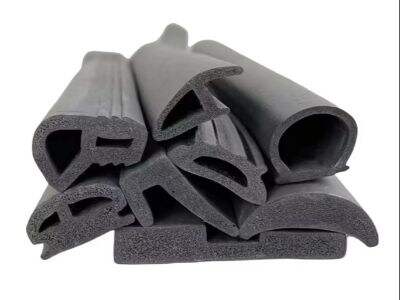วัสดุ TPV มีข้อดีและข้อเสียอยู่บ้าง การรู้ว่าจุดต่าง ๆ เหล่านี้คืออะไร และทำไมมันจึงสำคัญ เป็นสิ่งที่จำเป็น แล้ว TPV คืออะไร และมันสามารถเปลี่ยนแปลงชีวิตของเราได้อย่างไร?
จุดเด่นและจุดด้อย
เทอร์โมพลาสติกวัลคาไนเซท หรือ สินค้าจากฟองพอลิอุเรธาน และวัสดุ TPV เป็นประเภทยางที่ไม่เหมือนใครซึ่งผสมกับพลาสติก ผลลัพธ์ที่ได้คือสิ่งที่มีความยืดหยุ่นและความยืดได้เหมือนยาง แต่ยังสามารถปั้นและย้อมสีได้เหมือนพลาสติก อันเนื่องมาจากคุณสมบัติเหล่านี้ วัสดุ TPV จึงมีการประยุกต์ใช้งานอย่างกว้างขวางในหลากหลายสาขา
ข้อดีอย่างมากของ TPV คือความหลากหลายในการใช้งาน พวกมันถูกใช้ในผลิตภัณฑ์หลากหลายตั้งแต่ชิ้นส่วนในยานพาหนะไปจนถึงสิ่งของที่เราใช้ในชีวิตประจำวัน เช่น เครื่องครัวและแม้กระทั่งของเล่น นอกจากนี้ พวกมันสามารถปรับสูตรให้มีประสิทธิภาพในสภาพแวดล้อมเฉพาะ เช่น การทนต่ออุณหภูมิสูงหรือสารเคมีพิษได้ ความหลากหลายของเครื่องจักรเหล่านี้ทำให้เป็นตัวเลือกยอดนิยมสำหรับผู้ผลิตที่ต้องการวัสดุที่สามารถทำงานหลายอย่างได้
อีกหนึ่งข้อดีของวัสดุ TPV คือสามารถช่วยประหยัดเงินได้จริง อีกทั้งยังมักจะมีราคาถูกกว่าวัสดุทดแทนอื่นๆ เช่น ยางธรรมชาติหรือพลาสติกแข็ง ประโยชน์เรื่องต้นทุนนี้หมายความว่าบริษัทสามารถเลือกใช้วัสดุ TPV เพื่อรักษาต้นทุนให้ต่ำลง ในขณะที่ยังคงรักษามาตรฐานคุณภาพของผลิตภัณฑ์ที่ผลิตไว้ได้
ในอีกมุมหนึ่ง ยังมีด้านลบเกี่ยวกับวัสดุ TPV เช่นกัน พวกมันอาจล้มเหลวเมื่ออยู่ในอุณหภูมิสูงและต่ำมาก ซึ่งอาจเป็นปัญหาได้ เช่น ในสภาพแวดล้อมที่เย็นจัด วัสดุ TPV อาจเกิดความแข็งและความเปราะบาง ซึ่งสามารถนำไปสู่การแตกแบบเปราะได้ นอกจากนี้ "พวกมันอาจละลายในอุณหภูมิที่ร้อนมาก" คุณลักษณะนี้อาจทำให้วัสดุไม่เหมาะสมสำหรับบางการใช้งานที่อุณหภูมิในการทำงานเป็นปัจจัยสำคัญ
วัสดุ TPV อาจไม่มีความแข็งแรงเท่ากับวัสดุชนิดอื่นๆ ซึ่งอาจจำกัดการใช้งานในกรณีที่ต้องการความแข็งแรงและความทนทานสูง นอกจากนี้ อาจมีความยากลำบากมากกว่าวัสดุอื่นในการประมวลผล ส่งผลให้ต้นทุนการผลิตเพิ่มขึ้น บริษัทจำเป็นต้องพิจารณาปัจจัยเหล่านี้เมื่อเลือกที่จะใช้หรือไม่ใช้วัสดุ TPV
แนวทางโดยย่อเกี่ยวกับข้อดีและข้อเสีย
เมื่อประเมินวัสดุ TPV จำเป็นอย่างยิ่งที่จะต้องตรวจสอบข้อดีและข้อเสียของพวกมันอย่างรอบคอบ วัสดุ TPV และ สายปิดยาง สามารปรับตัวได้สูงในราคาที่จับต้องได้และสามารถสร้างขึ้นเพื่อตอบสนองความต้องการเฉพาะได้ นอกจากนี้ยังมีน้ำหนักเบาและทนต่อสารเคมีและความร้อนจากแสง UV ได้
แม้ว่าสาร TPV จะมีข้อดีหลายประการ แต่ก็มีข้อเสียบางประการเช่นกัน อาจไม่เหมาะสำหรับใช้งานในสภาพอุณหภูมิสูงหรือในแอปพลิเคชันที่ต้องการความแข็งแรงและความทนทานในระดับสูง นอกจากนี้อาจมีความยากในการแปรรูปมากกว่าวัสดุชนิดอื่น ซึ่งอาจทำให้ค่าใช้จ่ายในการผลิตสูงขึ้น เมื่อประเมินวัสดุ TPV สำหรับโครงการของตน บริษัทจำเป็นต้องทำสมดุลที่ละเอียดอ่อน
บทสรุปเกี่ยวกับวัสดุที่ทนต่อพายุ
สรุปแล้ว ข้อดีและข้อเสียของวัสดุ TPV พวกมันยืดหยุ่น มีต้นทุนที่เหมาะสม และสามารถใช้งานได้หลากหลาย แต่ไม่เหมาะกับการใช้งานในอุณหภูมิสูงหรือต่ำมาก หรือในกรณีที่ต้องการความทนทานในระดับสูง
ขึ้นอยู่กับ ผลิตภัณฑ์างUMIเนียะและพลาสติก และวัสดุ TPV อาจมีข้อดีข้อเสีย และคุณควรคำนึงถึงความต้องการเฉพาะของผลิตภัณฑ์ของคุณเมื่อพิจารณาใช้วัสดุ TPV ในธุรกิจของคุณ คุณจะสามารถเลือกสิ่งที่ดีที่สุดสำหรับบริษัทของคุณได้โดยการเข้าใจปัจจัยเหล่านี้
อย่างที่คุณทราบ RONGHE, วัสดุเป็นกุญแจสำคัญในการนำกลับมาใช้ใหม่ในธุรกิจของคุณ นั่นคือเหตุผลที่เราเสนอวัสดุหลากหลายชนิดที่มีคุณภาพสูงสุดเพื่อตอบสนองความต้องการของคุณ ติดต่อเราตอนนี้หากคุณมีคำถามใด ๆ หรือต้องการข้อมูลเพิ่มเติมเกี่ยวกับวิธีที่เราสามารถช่วยคุณหาวัสดุที่เหมาะสมสำหรับผลิตภัณฑ์ของคุณ!


